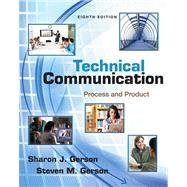ALERT: Before you purchase, check with your instructor or review your course syllabus to ensure that you select the correct ISBN. Several versions of Pearson's MyLab & Mastering products exist for each title, including customized versions for individual schools, and registrations are not transferable. In addition, you may need a CourseID, provided by your instructor, to register for and use Pearson's MyLab & Mastering products.
Packages
Access codes for Pearson's MyLab & Mastering products may not be included when purchasing or renting from companies other than Pearson; check with the seller before completing your purchase.
Used or rental books
If you rent or purchase a used book with an access code, the access code may have been redeemed previously and you may have to purchase a new access code.
Access codes
Access codes that are purchased from sellers other than Pearson carry a higher risk of being either the wrong ISBN or a previously redeemed code. Check with the seller prior to purchase.
--
Technical Communication: Process and Product, 8e by Sharon J. Gerson and Steven M. Gerson, provides a proven, complete methodology that emphasizes the writing process and shows how it applies to both oral and written communication. With an emphasis on real people and their technical communication, it provides complete coverage of communication channels, ethics, and technological advances. This edition includes information on dispersed teams, collaboration tools, listening skills, and social networking. Using before/after documents, authentic writing samples and skill-building assignments, the book provides a balance of how-to instruction with real-world modeling to address the needs of an evolving workplace.
0321889851 / 9780321889850 Technical Communication: Process and Product Plus NEW MyTechCommLab with eText -- Access Card Package
Package consists of:
0205890407 / 9780205890408 NEW MyTechCommLab with Pearson eText -- Valuepack Access Card
0321864948 / 9780321864949 Technical Communication: Process and Product








